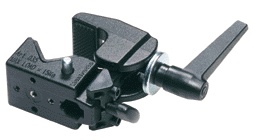Macro photography is one of the most demanding disciplines of photography. The world of the small is a strange and unique place and makes some unusual demands on a photographer interested in capturing its beauty. Razor thin depth of field, extremely close working distances, and long exposure times combine to make macro photography a challenge. But it’s a challenge with a reward. Macros reveal a world that can’t be seen with the naked eye, alien landscapes, and strange creatures both beautiful and grotesque. I encourage you to try it. Many who do find a passion for macro photography they never knew existed.
… Continue reading An introduction to macro and close-up photography

 Next Saturday I’m going to be doing about 30 group portraits with two to three poses each. And if you’ve ever taken a group photograph, you know how frustrating it can be trying to get everyone looking the same way at the same time, not blinking, or generally not looking goofy.
Next Saturday I’m going to be doing about 30 group portraits with two to three poses each. And if you’ve ever taken a group photograph, you know how frustrating it can be trying to get everyone looking the same way at the same time, not blinking, or generally not looking goofy. The Bogen Super Clamp (
The Bogen Super Clamp (






